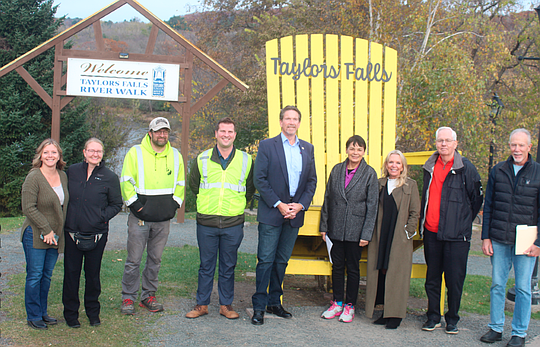May 25, 2017 at 10:43 a.m.
CLHS team runs three vehicle entries in the 29th annual MTEEA Supermileage Challenge
The very first challenge had seven teams from seven schools. This year’s challenge involved over 60 schools and more than 100 vehicles at Brainerd International Raceway for a two-day event.
Chisago Lakes built three vehicles, two would compete in the Modified class, the other in Stock class. The teams worked many hours to create a form, build a mold and make two carbon fiber bodies for the modified vehicles. Thanks to the Chisago City Fire Department’s donation, one of the modified vehicles would feature a fuel injection system purchased with department funds. The process started in January, and cars were completely finished just a few days prior to competition.
The purpose of the MTEEA Supermileage competition is to provide high school students the opportunity to test engineering, creative thinking and problem solving skills by designing and building a vehicle designed to get the highest mileage rating possible. Advisor Mike Sandell became involved by bringing a team to the second-ever challenge in 1989. Ryan Dewey became involved with Supermileage as a student in high school, and helped run the UW Stout competition while in college and has been an advisor as a teacher.
While all three vehicles were very competitive, the event never goes as smoothly as the students would like. This year only three of the 11 students had been to a competition.
The first step is to pass Technical inspection. This year, the Mirror test would be the most difficult for the teams to pass. The new bodies created a blind spot for the rear view mirrors that held up the two modified vehicles. A clutch issue would almost eliminate the stock vehicle from competition.
The modified vehicles were able to quickly solve the blind spot, but it would take about six hours for the stock team to solve the clutch problem, which turned into an engine swap.
Once the vehicles hit the track their performance soon had the students forgetting technical inspection problems. The first runs with new drivers are usually a little low in mileage ratings, yet with a little experience, the cars soon started to show their potential. While the stock team worked to solve the engine/clutch problem, both modified teams were completing mileage runs. A mileage run consists of two laps of a 3-mile road course at BIR.
The team is given a fuel bottle weighed to the hundredth gram both before and after the “run” The weights are entered into a computer program and a mileage rating is calculated based on the weight of the fuel used to travel the six miles. Teams also need to average 15 miles per hour and cannot exceed a 30 mph speed limit.
Over the sourse of the first four runs both modified teams had raised ratings from a starting point of just under 300 MPG to just over 400 MPG.
The first day was optimal for mileage ratings at about 75 degrees, some sun and very low wind. Once the stock team got going, they showed what they could do with a 439 mpg rating for their first run. Day One ended with all three in contention for top five finishes in the respective classes.
The second day started with a thunderstorm and a few needed repairs. The temperature had dropped into the 50’s and the day started with light rain. These conditions brought the mileage ratings down, but as the weather began to clear and the temperature started to recover, so did the mileage ratings.
For the competition scoring, a team needs to complete at least six competition runs. The best six of a vehicle’s completed runs are averaged for competition scoring. As the second day went on, making a run better than a team’s lowest of the runs being averaged became important. Driving strategy, vehicle checks and even a couple new fuel maps for the fuel injected entry were tried in efforts to increase each team’s standing. The teams talked about where they were finding “sweet spots” on the track for the best mileage rating. Each of the teams had at least three of their top runs in the last couple hours of the competition.
When everything concluded Chisago’s three vehicles were in contention for trophies. The stock class vehicle finished in 4th place in their class. This team had a six- run average of 440.36 MPG, missing a trophy by just 10 MPG. This vehicle also had the highest mileage run for CLHS this year at 494.49 mpg.
Modified teams also finished well, the number 36 vehicle was given the 3rd place trophy with a six- run average of 433.31 mpg, missing out on second place by just over 4 mpg. This would be like finishing a timed race by less than a 10th of a second. The Number 36 car finished in 5th place, official mileage ratings for this team were not available.





Comments:
Commenting has been disabled for this item.